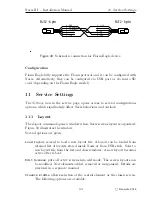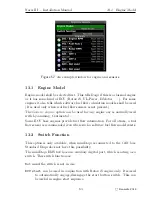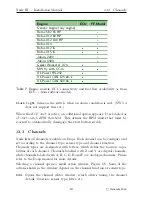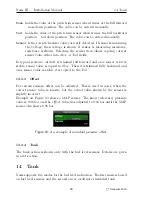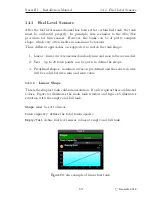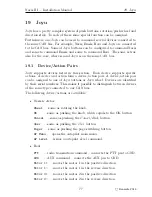
Nesis III — Installation Manual
12.2
Roll and Pitch Adjustment
Yaw correction affects the roll and pitch correction as well. Hence it is im-
portant to set yaw before roll and pitch adjustments are made.
12.2
Roll and Pitch Adjustment
Once yaw correction is known (in most cases it is zero), roll and pitch can
be adjusted automatically. Press the
Auto adjust
item on the window from
Figure 55 and wait for the progress bar to finish. Observe the roll and pitch
values. At the end, they should be close to zero.
If necessary, minor manual adjustments can be made by pressing on -
O
or +
O
symbols of the pitch and roll item. AIRU needs some time to react, so make
these adjustments slowly.
12.3
Initial Pitch
Small pitch adjustment can be also made during a flight. They are typically
needed when cruising speed has been changed. Once the Nesis shuts down,
this in-flight adjustment is forgotten.
The
Initial Pitch
option from Figure 55 allows entering the initial pitch cor-
rection, which will be used when the Nesis starts.
13
Engine
This section refers mostly to the engine and airplane sensors which are con-
nected to the Daqu device.
It is higly recommened to read and understand the Daqu manual before doing
changes. Almost any change described in this section will directly affect the
Daqu device. Any change will be transmitted to Daqu, which needs some
time to respond. This, we recommned not to work too quickly – to give the
system time to adjust to changes.
Figure 57 shows an example of the window. The window consists from the
top bar, where the engine model and some flags can be set and the larger
bottom part, where Daqu channels are configured.
The window will show up only when Daqu is properly connected to the CAN
bus.
62
©
Kanardia
2018






